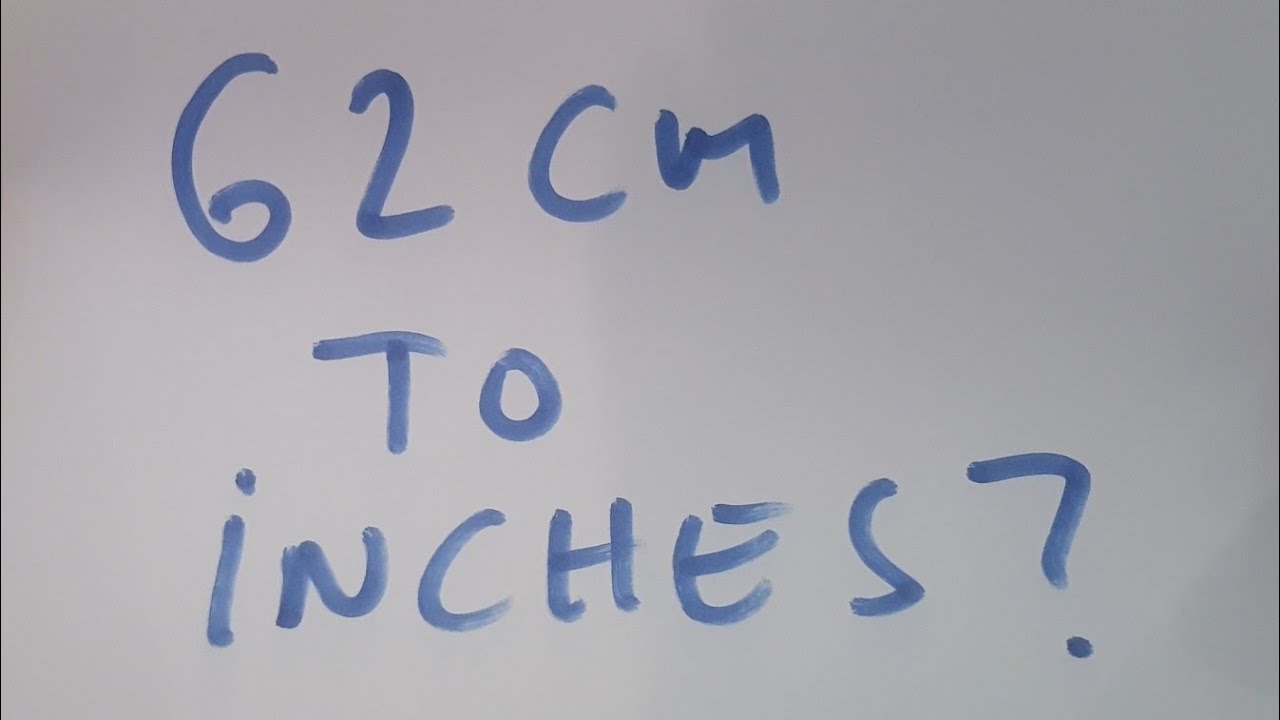62 Cm to Inches

In our globalized world, where information is readily accessible and conversions between different units of measurement are commonplace, understanding these conversions is essential. One such conversion that frequently arises is the conversion between centimeters (cm) and inches. In this article, we delve into the conversion of 62 cm to inches, exploring its significance, method, and practical applications.
Centimeters and inches are both units of length measurement, but they belong to different systems—centimeters being part of the metric system and inches being part of the imperial system. While the metric system is widely used around the world, the imperial system remains prevalent in certain countries, notably the United States. Therefore, being able to convert between these two systems is valuable for various purposes, ranging from everyday tasks to scientific calculations.
At its core, the conversion between centimeters and inches involves understanding the relationship between the two units. One inch is equivalent to 2.54 centimeters. This conversion factor, derived from the definition of the inch in the metric system, forms the basis for converting between the two units. By multiplying the length in centimeters by this conversion factor, one can obtain the equivalent length in inches.
So, what does this mean for 62 cm? To convert 62 cm to inches, we simply multiply 62 by the conversion factor (2.54). The calculation is straightforward:
62 cm × 2.54 inches/cm = 157.48 inches
Therefore, 62 centimeters is equivalent to approximately 157.48 inches.
Understanding this conversion allows individuals to comprehend measurements across different systems and apply them effectively in various contexts. For instance, in the realm of international trade and commerce, where products are manufactured and marketed globally, specifications often need to be communicated in both metric and imperial units to cater to diverse markets. Similarly, in fields such as engineering, construction, and design, where precision is crucial, accurate conversions between centimeters and inches play a vital role in ensuring the integrity and functionality of structures and products.
Moreover, the ability to convert between centimeters and inches is not merely confined to professional domains; it is also relevant in everyday life. Consider scenarios where individuals encounter measurements in different units—for example, when purchasing clothing or furniture online from international retailers. Being able to convert measurements enables consumers to make informed decisions and ensures that the items they select meet their requirements accurately.
Furthermore, understanding conversions between centimeters and inches fosters numeracy and mathematical proficiency. It encourages individuals to engage with mathematical concepts in practical contexts, enhancing their problem-solving skills and mathematical literacy. By practicing conversions, individuals develop a deeper understanding of the relationships between units of measurement and the principles underlying them.
Beyond its practical applications, the conversion of 62 cm to inches highlights the interconnectedness of diverse measurement systems and the universality of mathematical principles. In a world where collaboration and communication transcend geographical and cultural boundaries, the ability to navigate between different units of measurement reflects the adaptability and versatility of human knowledge and ingenuity.
Conclusion
The conversion of 62 cm to inches serves as a microcosm of the broader significance of understanding and applying measurements across different systems. It embodies the fusion of mathematical principles with real-world applications, enabling individuals to communicate effectively, make informed decisions, and solve problems efficiently. By mastering conversions between centimeters and inches, individuals not only enhance their practical skills but also deepen their appreciation for the intrinsic beauty and utility of mathematics in our daily lives.





